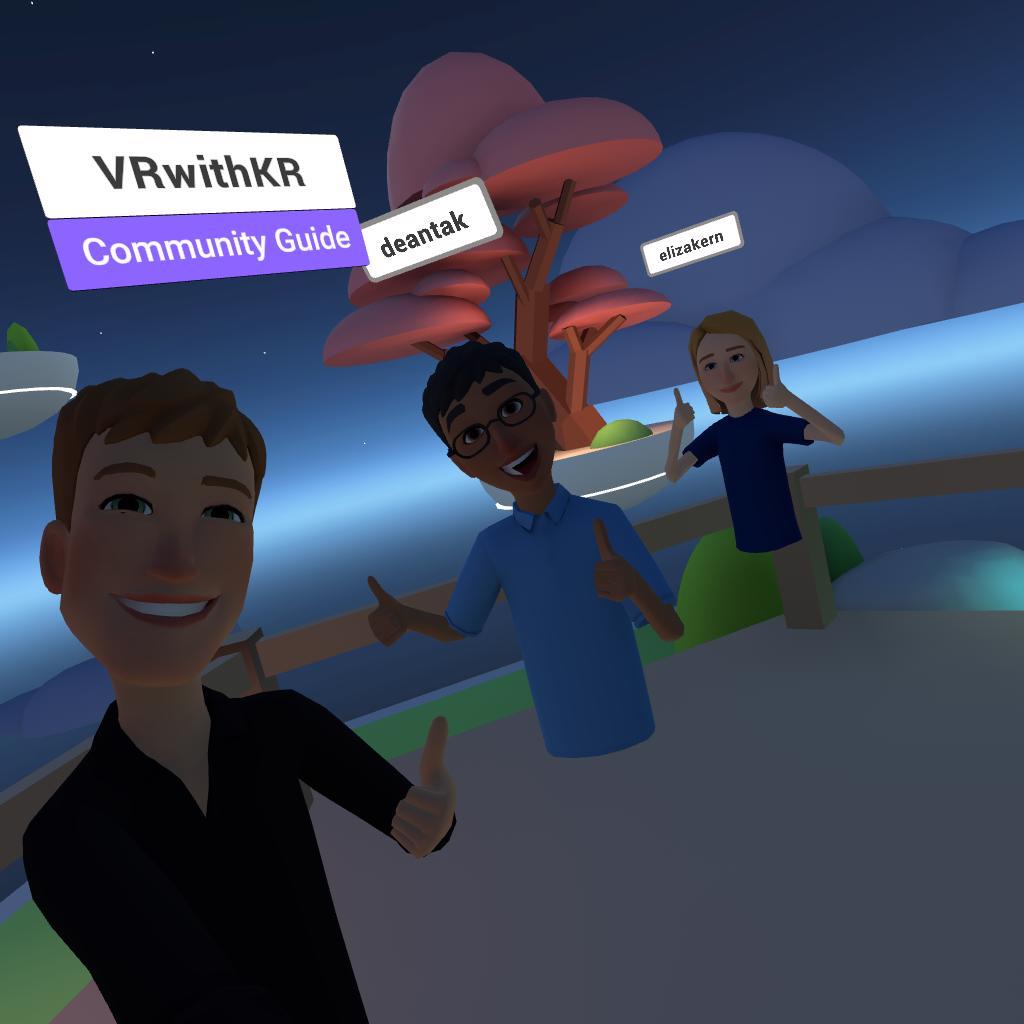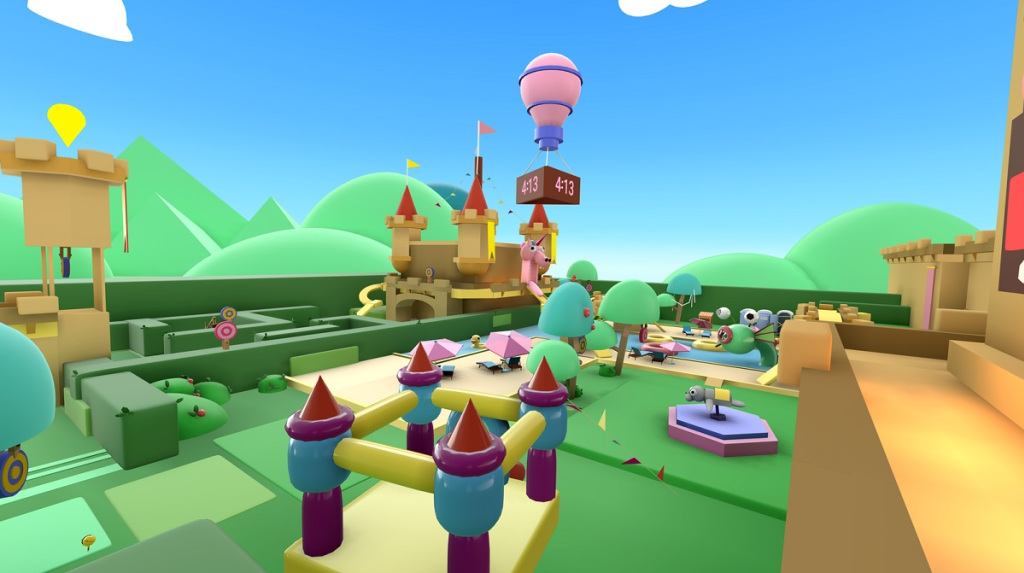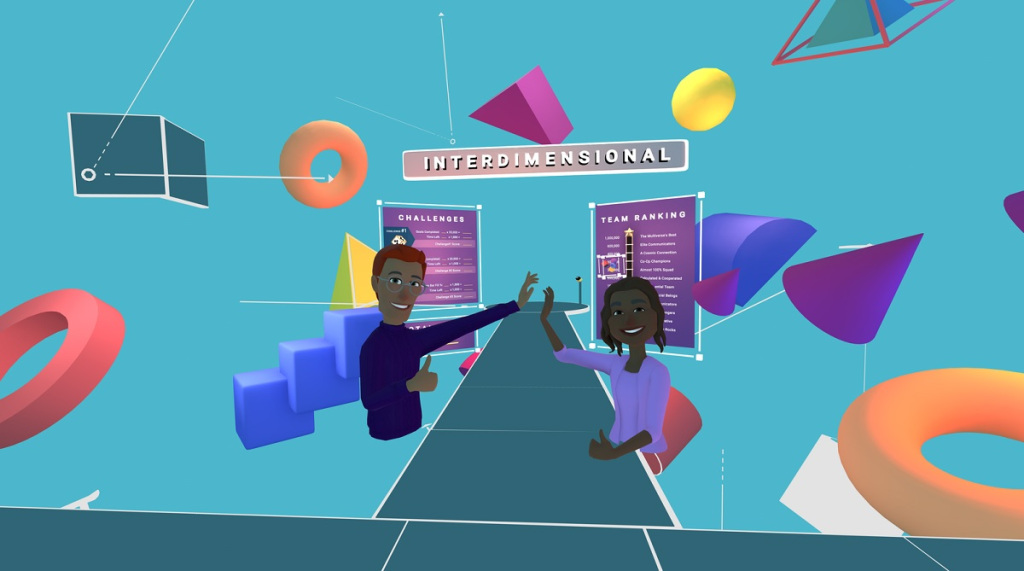While the Oculus Quest virtual reality headset debuted just 17 months ago, it’s time for it to move over, as Facebook is launching the Oculus Quest 2 on October 13, it announced today at its Connect event. And this headset has a lot going for it that could get a lot of people excited, particularly if they’re staying home because of the pandemic.
I’ve been able to play with the headset in my home, and I found it has a lot of improvements over the original, which I have used more than any other VR headset. One big difference is the price. The first Quest launched at $400 and $500, while the new headset will cost $300 for 64GB of storage and $400 for 256GB. It also has 50% better resolution, and it’s 10% lighter at 1.1 pounds.
Facebook also promises an update will beef up the refresh rate from 72 frames a second to 90 frames per second. These are some pretty big upgrades for such a short time. By contrast, the game consoles from Sony and Microsoft went six years before hitting a new generation, with one upgrade midlife. Facebook is also beefing up its production because it believes that this is the version of VR that will take the industry from an elite curiosity to a mainstream market.
With the Quest 2’s accessibility improvements, I believe this may be a pretty good bet. But like many others who saw the promise of VR back in 2016, when the first modern headsets appeared, I’m cautious about making any wild predictions.
Powering up the headset

Above: The Oculus Quest 2 is 10% lighter than the previous version.
Image Credit: Dean Takahashi
While the first Quest is black, this one is white. I charged the headset and turned it on by holding the power button for 2 seconds. A white LED light turns on, and the big “O” appears inside the headset as it boots up. It does an automatic software update if you sign in with your Facebook account and provide the right Wi-Fi credentials.
Upon setup, you can still create the Guardian, which is a border that you set where you are free to move without running into objects in your room. The Guardian uses the Passthrough+ cameras so that you can see the room while wearing your headset. You use your hand controller to draw an outline on the floor where you can move. If you move outside of or near the line while playing, you get a visual warning. You can access Passthrough+ any time by double-tapping on your headset. If you move to a new room, you have to reset the Guardian.
I logged in via Facebook and was immediately able to access the older titles that were available on my Oculus Quest. I had to re-download the applications that I wanted to play, but that was pretty simple via the Wi-Fi connection. The Home environment is a more relaxing and inviting place, and the improved resolution means that text looks better when you are browsing the web or watching videos.
It was pretty easy to pair my Quest 2 with the Oculus App via Bluetooth. In the Home interface, you can see new apps, social stories, and active multiplayer games that you can join, as well as apps that are popular with your friends and which friends are currently playing in VR.
Playing some games

Above: The Oculus Quest 2 has a $300 64GB version and a $400 256GB version.
Image Credit: Facebook
I played Pistol Whip from Cloudhead Games and Vader Immortal: Episode 2 on the Oculus Quest 2 headset as well as on the older Quest. I wanted to jog my memory about how good the graphics are on the original model.
Both games performed flawlessly, and they both looked great on the Quest 2’s new display. For the most part, it’s hard to tell that the display is different than on the first Quest. One of the few clues is antialiasing, a visual feature where you see a smoothing out of the jagged lines in images. The original Quest doesn’t have the best antialiasing, and the Oculus Quest 2 is much better at it. So you’ll see more smooth lines in games. But that’s not such a great improvement that you will immediately notice it.
It took me a second or two to adjust the headset so that I could see clearly. I had a slightly harder time aiming in Pistol Whip with my gun on the Quest 2 than I did with the original model. But it wasn’t so bad that I couldn’t play the game. I’m looking forward to playing games that exploit the better resolution.
I also sweated myself silly in the first few levels of Beat Saber with the new Quest. I’m looking forward to playing side-by-side with someone else. When Facebook revs up the framerate to 90 hertz from 72 hertz, I think you’ll see a noticeable difference. Meanwhile, the way you’ll really notice this improvement is when developers start shipping games that can use the higher resolution, the better antialiasing, and the faster frame rate. There are a number of games coming, so the wait shouldn’t be that long.
Facebook Horizon hands-on

Above: The Plaza in Facebook Horizon.
Image Credit: Facebook
I tried out Facebook Horizon, the online virtual world that Facebook is creating for VR. The world is in closed beta testing now, but Facebook’s Kevin Reilly gave me a guided tour. When it opens, most of the content will be created by users, much like in Minecraft or Roblox — only it’s all in VR. This aspect could also be appealing for the corporate market, either via meetings or branded spaces.
As I was setting it up, the first thing Horizon asked was whether I wanted to sign in with my Facebook account. I proceeded and then started creating my avatar. (By October, you will have to login with a Facebook account, or if you want to keep your Oculus account, you can do that for two more years). I could choose from different kinds of skin color, hair, body type, and clothes. They were all fairly rudimentary and cartoon-like. I didn’t spend that much time playing around with it, because there weren’t that many choices.
Then I met Reilly and Eliza Kern of Facebook in a place called The Plaza. It was my second visit to Horizon, and it looked nicer. The Plaza is a city plaza in a park. You can see doors in various places that are portals to VR experiences, though most of them so far come from Facebook’s internal teams (in the future, Facebook expects Horizon users to make many of these with its content-creation tools). Before checking them out, Reilly took me around the side of the main plaza to see a secret hideaway. It’s a little cliffside hideout where you can look out on a nice view of the horizon. We took a selfie on the cliff and moved on. Reilly thinks of the hideout as an Easter egg.

Above: A selfie in Facebook Horizon.
Image Credit: Facebook
Reilly taught me how to navigate Horizon. I used my hand controllers to maneuver to a tab in the Worlds interface called Worlds. These are the places within Horizon that people in the community will create for others to explore. They can be games, escapes, gathering places, or social hangouts that are animated in a cute but realistic cartoon art style. One day, if enough people come and build it out, it will be Facebook’s version of the the Metaverse, the universe of virtual worlds that are all interconnected, like in novels such as Snow Crash and Ready Player One.
Right now, it’s not a huge place for big events. You don’t watch movies or go to concerts. Rather, you visit social spaces with just a handful of friends.
You can maneuver either by using a slider that moves you in a fluid way, or a teleporter that quickly transports you from one place to another (without making you nauseous).

Above: Balloon Bash is a place in Facebook Horizon.
Image Credit: Facebook
The first place we visited was a Facebook employee’s creation called Balloon Bash. Reilly showed me how to pick up a balloon-shooting gun with my Touch controller and then fire a balloon by pulling a trigger. I had to shoot at a target. This was where my wife interrupted me and led me from our living room to the kitchen. Thankfully, the Guardian reformed itself in the new space, and I didn’t get knocked out of the game.
While we were there, Reilly showed me a safety measure. If you look at your wrist in VR, you’ll see a shield. If you hit it, it will take you out of the social experience with other people and put you in your own bubble. You can take the time to recover there if you need to, or you can report someone if you had a bad experience. That bubble is a pretty good manifestation of an escape route in case you needed it.
Then we started Balloon Bash by stepping on a big pad with the word “Ready.” Then the loading screen started and Facebook Horizon built the world for us. It took a little while, but it wasn’t a huge wait. And then we were in this playground with a bunch of hanging targets. We had to move from one spot to another and shoot balloons at the targets to get points. Once you hit the target, it disappeared, and you had to teleport to another part of the playground to shoot some more targets. There are a hundred targets. It’s a timed competition, and Reilly humored me by saying I was good.
But it’s an effortless experience that I learned within a minute of playing. The toy gun is cute because you could leave it hanging in the air, and it would just stay there. And if you let go and walk away from it, it would just magically reappear in front of you so you didn’t have to search for it.

Above: The Interdimensional in Facebook Horizon
Image Credit: Facebook
Next, we teleported to a place called The Interdimensional. Kern abandoned us for a little while because she forgot to charge her Quest 2. But she came back. Inside The Interdimensional, we joined a game show with two contestants, while Kern was a spectator. It’s a two-player game that requires communication and cooperation.
The object is to move a cube into a hole in the wall. But one person has to describe the figure on a wall or floor that will cause the cube to move in a certain direction. The other player has to press one of six buttons that will make the action happen, manipulating gravity so the cube moves. You have to have a little bit of spatial ability to solve the puzzle, which reminded me of Valve’s Portal 2. It was a cute puzzle. It wasn’t too hard to figure out, but it was clever.
Finally, Reilly took me to a blank canvas. It was a pretty big space, with a bunch of white tiles leading toward the horizon. Reilly asked me what I wanted to build. I asked for a Trojan horse. He started working on it.
Meanwhile, he also told me how to build my own objects inside the world. Here, your hands turn into tools. You can move your fingers like pincers to change how big you are. If you want to be huge, you can do so, and this helps you see what you are building better. I made myself too small, and Reilly had a hard time seeing me.

Above: A Trojan horse in Facebook Horizon.
Image Credit: Facebook
You can use your controllers to put yourself into “edit mode.” Your hands become discs, and you can move the analog stick to initiate different functions, like preview mode. I opened a palette of shapes, like cubes, cones, balls, and so on. I picked them up with one hand and placed them into the world. I could go up to the shape and expand it or contract it on the fly. There was no latency as this was happening. Everything took place in real time. You can build things together if you want, with four-to-eight people in a space.
I started putting shapes together and built a white tin man, which Reilly mistook as a robot. He showed me how to paint my robot, again using hand controls. And then I glanced at what he had built. It was a metallic Trojan horse, with a black mane and brown coat. And he built a wall with a gate. Then he began scooting the Trojan horse all around the place. I hopped in. It was hilarious.
And that was the end of my 45-minute jaunt through Facebook Horizon. It’s a cool world. The sunset was beautiful. And once I figure out how to build things, I think I could spend a lot of time in there.
The Oculus Quest 2 is an easy-to-use system with a lot of potential. I hope the developers show up with a lot of cool experiences in the future.
